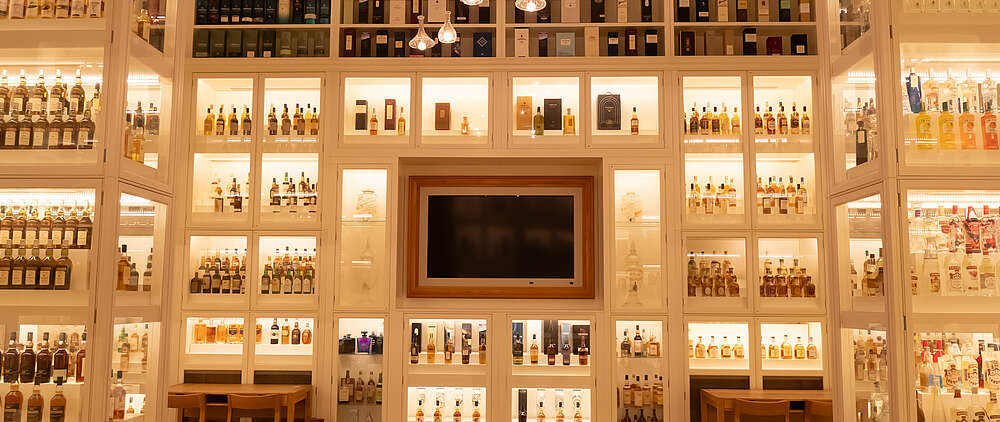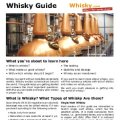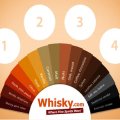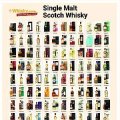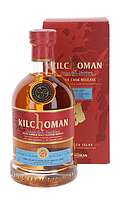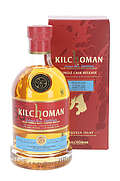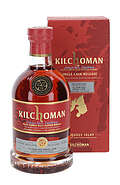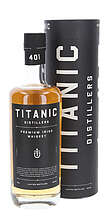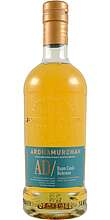Differences between Original Bottlings and Independent Bottlings
Half of the experiment was carried out with original bottlings (OB), the other half with independent bottlings (IB). For years there has been a trend towards IBs. Many independent bottlers put a lot of emphasis on non chill filtration in their marketing.
The casks for IBs are from the same distilleries as the Whiskies of the OBs, but the Whisky takes a different route from the cask into the bottle. The casks for OBs are specially selected from the warehouses of the distilleries. The cheaper and usually younger the Whisky is, the more bottles are sold on the market and the larger the batches of the jointly bottled casks become (for financial reasons). This means that also the individual tastes of the casks of a single distillery are statistically averaged in large vats. Since the casks are all from the same distillery these Whiskies are still Single Malts. Only if casks from different distilleries were blended together a Whisky would lose the Single Malt uniqueness.
The Whiskies from IBs, on the other hand, are usually a Blend of only few casks or even single cask bottlings. Among the IBs used in the experiment were Blends of few casks as well as single cask bottlings. Both bottling types have in common that sometimes there are considerable deviations from the averaged 'original distillery taste'. These single casks often get to the IBs through unexpected channels. Sometimes the bottle label states that the casks were specially selected and are therefore of high quality. This suggests that these IBs are better than OBs. That is not the case. Independent bottlers have never been allowed to browse the warehouses of the distilleries and to taste and select various casks. The opposite is true. No matter whether an IB had his own casks filled or intercepted casks on their way to the Blended Whisky industry (through cask brokers), the choice for IBs is much more restricted than for OBs.
For decades supporters of original bottlings and fans of independent bottlings have fought an almost religious war. The adherents of IBs speak of more individual casks with more unusual aromas, since no blending in a large vat takes place. The supporters of OBs, on the other hand, argue that only the owner of the distillery can actually taste the casks before botlling, resulting in a higher quality.
There are only few independent bottlers in Scotland who have warehouses with more than 10,000 casks, which enables them to actually choose between different casks. Usually the only choice they have is to wait for the ideal point of maturation or to finish a Whisky, i.e. to transfer the spirit from an exhausted cask into a new and active one. That is why for this study bottles from three of the bigger IBs, namely Signatory Vintage, Douglas Laing and Ian MacLeod, were selected. No bottles from Scotland's biggest IB, Gordon & MacPhail, were used, since at the time of the experiment only few non chill filtered Whiskies were available.
Table 4. Statistical Summary of the Results for Original Bottlings
| Original Bottlings | Count | Percent |
|---|---|---|
| Amount of samples | 666 | |
| Amount of chill filtered samples | 332 | 49,8% |
| Amount of non chill filtered samples | 334 | 50,2% |
| Amount of distilleries guessed right | 29 | 4,4% |
| positive identified chill filtrations | 155 | 46,7% |
| non positive identified chill filtrations | 177 | 53,3% |
| positive identified non chill filltrations | 179 | 53,6% |
| non positive identified non chill filtrations | 155 | 46,4% |
| positive identified filtrations | 334 | 50,2% |
| non positive identified filtrations | 332 | 49,8% |
| Mean | ||
| Average quality chill filtration | 3,4 | |
| Average quality non chill filtration | 3,5 |
Of the 1,331 samples 666 were original bottlings. 332 samples were chill filtered, 334 were not. 29 distilleries were identified correctly. Thus the distillery identification rate (4.4%) is also very low.
Like with the aggregate amount of samples, with 46.7% the identification rate for chill filtration is below 50% here, but 1.7 percentage points above the average identification rate for all samples.
Analogous to the aggregate, with this subset the identification rate for non chill filtered samples is more than 50% (53.6%), but 1.3% below the average identification rate for all samples.
In total the filtration method was correctly guessed for 50.2% of all OB samples. This is 0.2% more than for all samples together, but de facto it is mere guesswork.
The quality rating, however, is interesting. With 3.5 points the non chill filtered samples were rated 0.1 scale points better than the chill filtered samples.
Table 5. Statistical Summary of the Results for Independent Bottlings
| Independent Bottlings | Count | Percent |
|---|---|---|
| Amount of samples | 665 | |
| Amount of chill filtered samples | 332 | 49,9% |
| Amount of non chill filtered samples | 333 | 50,1% |
| Amount of distilleries guessed right | 31 | 4,7% |
| positive identified chill filltrations | 144 | 43,4% |
| non positive identified chill filtrations | 188 | 56,6% |
| positive identified non chill filltrations | 187 | 56,2% |
| non positive identified non chill filtrations | 146 | 43,8% |
| positive identified filtrations | 331 | 49,8% |
| non positive identified filtrations | 334 | 50,2% |
| Mean | ||
| Average quality chill filtration | 3,4 | |
| Average quality non chill filtration | 3,3 |
Table 5 shows the evaluation for the independent bottlings. Of the 1,331 samples, 665 were independent bottlings. 332 samples were chill filtered, 333 were not. With the independent bottlings, the distillery identification rate (4.7%) is slightly above the rate for original bottlings.
Like with the aggregate amount of samples, the identification rate for chill filtration (43.4%) is below 50% here, but further 1.6 percentage points below the average identification rate for all samples.
Analogous to the aggregate, with this subset the identification rate for non chill filtered samples is more than 50% (56.1%), but 1.3 percentage points above the average identification rate for all samples.
In total the filtration method was correctly guessed for 49.8% of all IB samples. This is 0.2 percentage points below mere guesswork.
The quality rating, however, is interesting. With 3.3 points the non chill filtered samples were rated 0.1 scale points worse than the chill filtered samples.


